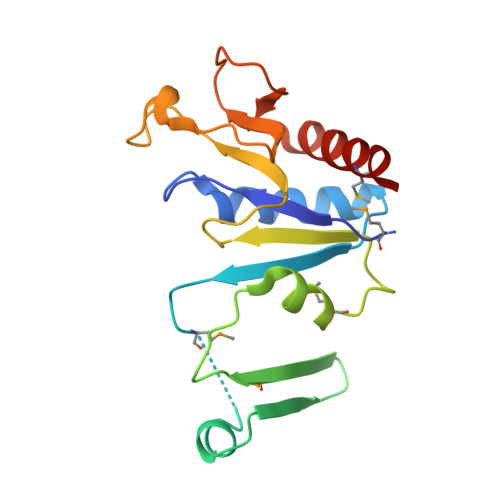Molecules of Escherichia coli MobB assemble into densely packed hollow cylinders in a crystal lattice with 75% solvent content.
Rangarajan, S.E., Tocilj, A., Li, Y., Iannuzzi, P., Matte, A., Cygler, M.(2003) Acta Crystallogr D Biol Crystallogr 59: 2348-2352
- PubMed: 14646116
- DOI: https://doi.org/10.1107/s090744490301967x
- Primary Citation of Related Structures:
1P9N - PubMed Abstract:
The crystal structure of Escherichia coli MobB, an enzyme involved in the final step of molybdenum-cofactor biosynthesis, forms intertwined dimers. Each molecule consists of two segments and requires the second monomer for stable folding. Dimerization buries a quarter of the solvent-accessible area of the monomer. These dimers assemble into a hexagonal lattice with P6(4)22 symmetry and occupy only approximately 25% of the unit-cell volume. The symmetry-related dimers associate tightly into a helical structure with a diameter of 250 A and a pitch of 98 A. Two such helices are intertwined, shifted by 49 A along the sixfold axis. Within the crystal, these helices form thin-walled cylinders with an external diameter of 250 A and an internal diameter of 190 A. Their center is filled with solvent. These cylinders pack closely together, forming a hexagonal lattice with the highest possible packing density. This arrangement of dimers allows extensive intermolecular contacts with 75% solvent content in the crystal.
Organizational Affiliation:
Department of Biochemistry, McGill University, Canada.


















